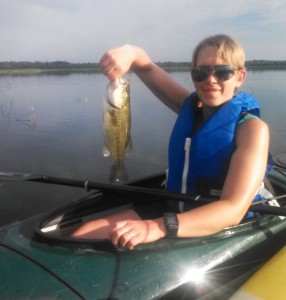 What’s all the “Fe”ss about? We’re not the only organisms that need Iron, which can mean we have some competition in getting the nutrients we need. Ada Hagan breaks down the ins and outs of Iron and bacteria. Even the most well-nourished body and brain can still learn a LOT about consciousness and psychoactive substances. Research on psychedelics is only just now recovering fromits implosion in the 70s, following the heydey of LSD research in the 60s. What does our current understanding of the brain tell us about the psychadelic experience? Dr. George A. Mashour walks us through a little research history and leads us through his present exploration of ketamine.
What’s all the “Fe”ss about? We’re not the only organisms that need Iron, which can mean we have some competition in getting the nutrients we need. Ada Hagan breaks down the ins and outs of Iron and bacteria. Even the most well-nourished body and brain can still learn a LOT about consciousness and psychoactive substances. Research on psychedelics is only just now recovering fromits implosion in the 70s, following the heydey of LSD research in the 60s. What does our current understanding of the brain tell us about the psychadelic experience? Dr. George A. Mashour walks us through a little research history and leads us through his present exploration of ketamine.
Mark your calendar, grab a friend, and say hey to a fellow nerd! We’ll see you at LIVE with a frosty beverage in hand for August’s edition of Nerd Nite!
When: August 20: 6:30 doors, 7pm nerd space and time
Where: LIVE, 102 S First St, Ann Arbor
$$$: NO COVER because Ann Arbor District Library!
$$$: NO COVER because Ann Arbor District Library!
The Battle for Iron: What’s all the “Fe”ss about? – Ada Hagan
Iron is an important nutrient that we all make sure to get enough of in our diets. Did you know bacteria need it too though? Come learn about the battle invading bacteria wage against your body over iron atoms. Those bacteria have some pretty cool tricks up their sleeves, but so do we! That is, if we learn enough about it…
About Ada: Ada is a PhD student in Microbiology and Immunology and spends her days doing recon on the strategies bacteria use to invade our bodies. She is passionate about communicating science because she feels the more we all know about science and how things work, the better choices we can make about our lives. In her spare time she enjoys being outdoors with her dogs, and fishing with her husband. Ada is also involved with MiSciWriters, a student-run science writing blog.
The Psychedelic Brain – Dr. George A. Mashour
Psychoactive substances have been known since antiquity and modern psychedelic subculture underwent an explosion in the 1960s followed by an implosion in the 1970s. More recently, the neuroscience of psychedelic drugs has emerged from the shadows of a dark past. What are the neural correlates of the psychedelic experience? What does this phenomenology and neurobiology tell us about the functioning of the brain? I will discuss these questions as well as my own research on ketamine.
underwent an explosion in the 1960s followed by an implosion in the 1970s. More recently, the neuroscience of psychedelic drugs has emerged from the shadows of a dark past. What are the neural correlates of the psychedelic experience? What does this phenomenology and neurobiology tell us about the functioning of the brain? I will discuss these questions as well as my own research on ketamine.
 underwent an explosion in the 1960s followed by an implosion in the 1970s. More recently, the neuroscience of psychedelic drugs has emerged from the shadows of a dark past. What are the neural correlates of the psychedelic experience? What does this phenomenology and neurobiology tell us about the functioning of the brain? I will discuss these questions as well as my own research on ketamine.
underwent an explosion in the 1960s followed by an implosion in the 1970s. More recently, the neuroscience of psychedelic drugs has emerged from the shadows of a dark past. What are the neural correlates of the psychedelic experience? What does this phenomenology and neurobiology tell us about the functioning of the brain? I will discuss these questions as well as my own research on ketamine.
About George: Dr. Mashour is a neuroscientist, anesthesiologist and the founding director of the Center for Consciousness Science at the University of Michigan.
